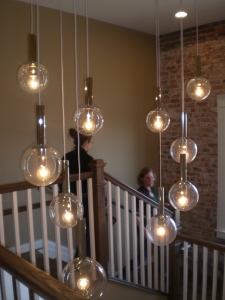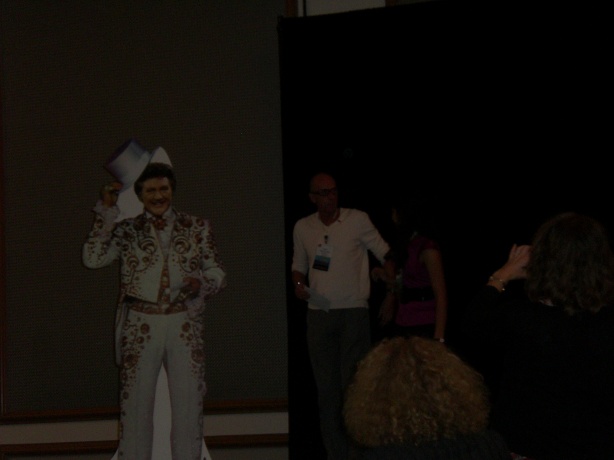BACKGROUND
The evolution of Social Media is perhaps the most perplexing and comprehensive enhancement of the Internet we have seen this past decade. By reshaping the way people communicate on both a personal and professional level, the social web has taken Marketing, Advertising, Public Relations, Customer Service, Communications and Marketing Research to the next level, through a variety of new channels and tools.
As with any dramatic change within the marketing research landscape, it comes with expected hesitance and thorough inspection. However, as a crucial piece of the evolving business environment, the social web and social media tools have quickly become a key focus in the marketing research community. While various levels of surrounding scrutiny remain present, to this date, emphasis and direction has been placed greatly on the appeal of utilizing tools and social networks, e.g., Facebook, Twitter, LinkedIn and Blogs, for quantitative research and syndicated data analysis. However, taking a holistic look at social media and its core, shows a tremendous amount of value in leveraging its conversations for engaging consumers and cultivating rich insights in the qualitative setting.
As businesses continue to more effectively harness the power of social media and online communities for branding, marketing and various other communications and customer-relations functions, the importance for marketing research professionals to utilize the same social tools for research grows concurrently. The trending growth and transfer of advertising and marketing dollars from “traditional” media channels such as TV, radio, outdoor and print to newer more engaging channels such as user-generated video, online communities and social tools, shows a paradigm shift in today’s business culture.
IMRO, the Interactive Marketing Research Organization, is a division of the Marketing Research Association (MRA) and is dedicated to providing an open forum for the discussion of best practices and ethical approaches to research being conducted via the Internet. IMRO’s Technology Sub-committee team of Tamara Kenworthy, Jim Longo, Susan Saurage-Altenloh and Jewel Seperson set out to explore the utilization of these new social media tools for qualitative research. Rather than focusing another study on the theory of using these new tools, they sought out Benjamin Smithee, Co-Founder of Spych Market Analytics, LLC, who has been recognized as one of the leaders in the integration of social media and other online and traditional methods into holistic solutions for qualitative research. Together, under Ben’s leadership, the project team developed and effectively executed a three-phase comprehensive examination of how social media can effectively be used for qualitative research and how the blend of social, online and traditional qualitative methods can provide truly holistic insights for researchers and their clients.
PURPOSE OF STUDY
The purpose of the study described in this document was to explore the optimal utilization of social media in qualitative research and serve as a case study for all researchers looking to incorporate it into their methodologies and research toolbox. It provides actionable recommendations and exemplifies the nuances of how the social web can best apply to market research in the qualitative setting. Additionally, it showcases the value of utilizing a holistic approach for obtaining consumer insights via blended methodologies.
Marketing research professionals are increasingly tasked to stay on the leading edge of technology and marketing channels in order to provide innovative and effective solutions for their clients. This case study provides a valuable set of findings to professionals across the gamut of research. It is meant to serve as a landmark while helping to educate research professionals.
STUDY DESIGN
For our case study, the following topics were selected due to their general interest and popularity with a wide range of the B2C market.
As a caveat, please understand that the main focus of this study was not the particular insights derived from the research, but the comparison and utilization of methodologies. Though the insights were used as measurement tools to compare and contrast methods and channels, the content was not of particular interest to the team. For example, the fact that coffee grounds were difficult to remove from the packaging was not of interest. However, the fact that it was derived unprompted via social media monitoring and then was a discussion point later in the online and in-person work was of interest.
- Saturday Night Live premiere, September 24, 2009
– Hosted by Megan Fox
– Musical Guest U2
- Starbucks’ Via, new product advertising, shown on SNL premiere as part of ad launch
– Buzz about product and commercials pre and post-commercial launch
Goal:
- To examine the impact and value of utilizing social media and mixed methods for qualitative research
Objectives for Topic:
- To understand the impact of SNL season opener on the SNL brand
- To understand how the SNL premiere’s host is received, based on recent controversy surrounding the director of her recent film
- To identify awareness of and interest in Starbucks’ new product, Via
A three-phase comprehensive mixed-methodological approach was designed and implemented over the course of two months, with 2 weeks of fielding, exploring the use of social media tools in various methods of qualitative research both online and in-person.
RESEARCH PHASE I
Digital Ethnography via Social Media Aggregation and Analytics
Rich and candid insights provided in real-time via digital ethnography and social media engagement; Recruitment of respondents for Phase II and Phase III
- Real-time monitoring before, during and after premiere via Twitter, Facebook, blogs and existing online communities
- Monitored sentiment trends
- Obtained viewer reactions and insights to a variety of different “peaks” and “valleys” throughout the course of the research
- Monitored trending topics before, during and after the premiere
- Identified key discussion leaders and influencers via reach, engagement and impact
Tools:
- Facebook: Search, Community Pages, Fan Pages, Facebook-based apps
- Twitter: Location-based application, Real-time search, TweetDeck, HootSuite, Advanced Search (search.twitter.com)
- Google Reader – RSS Feeds
- LinkedIn
- TV Network Communities
- SNL Blogs
RESEARCH PHASE II
Online Bulletin Board/Fire-walled Social Communities and Video Journaling
Compare and contrast insights derived from Phase I with data and insights derived from Phase I1; Further focus placed specifically on Starbucks Via (commercial campaign launched during premiere), which evoked high levels of online interaction; Video journaling via Flip video cameras; Respondents added Ben as friends and followers on various social media tools, allowing the team to observe various interactions and conversations on Facebook, blogs and Twitter
- Online Bulletin Board (software provided by Itracks) with viewers of the premiere: half of the participants comprised of those recruited via traditional recruitment means and half of the participants recruited solely via social media engagement
- Discussion revolving around feedback on the premiere, its content and Via advertising
- Video Self-Ethnos utilizing Flip video cameras
- Monitored daily objectives surrounding Starbucks Via
- Monitored respondents’ spontaneous utilization of SM
- Compare and contrast sentiment and viewpoints from both respondent groups with data captured in Phase 1
Tools:
- Itracks: Online Bulletin Board Focus Group platform
- Recruitment from Itracks panels
- Spych recruited individuals via social media from Phase 1 social media monitoring and engagement
RESEARCH PHASE III
In-person Focus Groups
Comparison of opinions and insights obtained via Phases I and II with traditional in-person methods.
- In-person Focus Groups following the Video Self-Ethnos obtaining feedback on Starbucks Via and
Tools:
- Facility donated by Fieldwork Dallas
SUMMARY AND FINDINGS
Commentary and Thoughts by Ben Smithee
Having had experience utilizing the power of social media for qualitative research, I was not surprised to see compelling results when used in combination with other well-trusted methodologies and tools. Its ability to often assist the researcher in every phase of the research process, from study design, recruiting and discussion guide development, to communication with respondents and reporting is a tremendous asset to any qualitative project.
Though the use of social media may not officially make it into every project’s methodology, I rarely start a project without doing background research and monitoring via social media about the subject, brand or other related online communication. Once you become familiar with the tools and technology, you often find tremendous value in the nuggets of insights that are cast out into the social media realm.
For this case, in particular, information about the difficulty of removing all of the grounds from the package was derived from observing social media streams and then later were brought up again in both the bulletin boards and focus groups and observed in the video journals. Additionally, insights on the frequent use of Via for cooking and baking provided additional information that was later utilized in discussion guide development. The use of social media to enhance pre-research knowledge may be the most valuable addition to the researcher’s toolbox. As a caveat, these findings are extremely qualitative in nature and should be utilized as idea generators and possible discussion topics to further more in-depth research, rather than stand-alone “truths” and assumptions.
Another very valuable and growing capability for social media is identification of digital influence and recruiting potential. By thorough observation of conversations, commenting, responses, retweets, “likes” and other engagement metrics, researchers can begin to identify individuals or groups, portraying influence in the social media channels. Though there is not always a direct correlation between messages and communications from influencers and purchase behavior, there is definite usefulness in having brands appear in these conversations and engagements. There is, however, a key to successful recruiting and engaging influencers via social media and that lies in the researcher/company possessing and maintaining an active presence in the social space. Within the social media realm, trust is a valuable currency and without it, the ability to effectively recruit and engage is severely limited. Researchers and research companies must begin to build an active presence to fully-utilize the value of social media tools.
The nimble aspect of social media lends itself to the ability to monitor marketing and advertising campaigns in real-time and react to and monitor both positive and negative effects and responses within the natural digital environments. Think of this as being able to engage viewers of a television advertisement directly through the television, as they view and react to the ad in real-time. This real-time reaction and engagement allows researchers to obtain candid insights and probe further among “in the moment” thoughts and reactions to various stimuli. Additionally, you are able to view and engage in the setting in which the initial observation was made. This is something that is unique to the social media realm.
Overall, perhaps the most compelling outcome of this study came from looking at the utilization of social media within the holistic mix of online and traditional in-person research. The findings in each phase were very cumulative in nature. Rather than one particular method serving as most/least useful, it was very apparent that there is a particular role for each method within the qualitative spectrum. Social media monitoring and engagement offered new ways to mine insights that have never been available and provided valuable material to help build and design additional methods to obtain more in-depth insights. The rapport built and managed from utilizing online research before in-person provided the respondents with a familiarity and comfort, allowing us to dig into rich and comfortable conversation very quickly in the in-person setting, even with multiple “typically-shy” respondents in the groups. The respondents were even vocal about their comfort level in the in-person setting due to the previous video, online and social phases.
WHAT THE FUTURE HOLDS
Thoughts for the Future by Ben Smithee
So what does this mean for the future of qualitative research? How do all of these tools and methods work together to provide solutions for companies and brands? What should the interested researcher focus on in regard to the future of the industry? Though there is no crystal ball for this rapidly changing industry, I am willing to put it out there and offer what I make of all of this.
The future of qualitative research is bright and the myriad of available tools and methodologies will continue to grow and multiply. Savvy researchers will embrace these changes and utilize them to their full advantage. Start on the very high-level and look at industry and overall trends. Then begin to look at the leading tools/platforms within those trends, as that is the only way to keep up. For example, do not go straight to Facebook, LinkedIn and blogging communities. Instead look at the bigger picture of online communities and what they mean to the qualitative space. Then identify the major or most important players within that space. After all, it is not really about Twitter, it is truly about the fact it has brought about the face of real-time communication and two-way brand engagement. If you always try to keep up with the next available platform or technology, rather than the trend of technologies, you will always be behind.
The science and art of location-based applications and marketing will continue to change the face of marketing and advertising as we know it. The ability to reach consumers in a relevant and timely manner, with offers and content that is desirable to the individual, offers a new and potentially highly-effective way of impacting behavior. After all, we are not averse to marketing and advertising. We just expect it to be relevant and have perceived value to us personally.
The sense of online communities is here to stay and will continue to evolve over the next couple of years. Brands will further engage in branded communities and begin to further focus on the influencers and brand champions. As researchers, we must approach online communities as a completely different entity from a longitudinal bulletin board or consumer panel. While traditional research methods, both online and in-person, have specific objectives and goals, the online community environment may have several different goals and objectives throughout. The linchpin is engagement. The most desirable aspect of a truly engaged online community is the ability to obtain new insights that you were unaware to even ask about previously. It is through these communities that marketing research and marketing will further begin to blend, and marketing research will begin to produce tangible ROI via community member loyalty and varied shopping habits. These online communities will often become the hub for a brand’s marketing research mix and enhanced micro-communities will begin to evolve, furthering the closing gap between brands and their customers.
Though processes and tools are becoming more and more automated, there will be an increased need for research experts to interpret the data and provide true insights and recommendations. The market researcher of tomorrow will not only need to be aware of the myriad of tools and methods but understand and direct proper use of each.
This is truly an exciting time to be involved in marketing research and it will be an exciting journey observing the changes that take place over the next few years.
PROJECT TEAM
Benjamin Smithee
Managing Partner
Spych Market Analytics, Texas
Tamara Kenworthy, PRC, PCM
President
On Point Strategies, Iowa
Jim Longo
VP/Client Development
Itracks, New York
Susan Saurage-Altenloh, PRC
President
Saurage Research, Inc., Texas
Jewel Seperson
Research Manager
Ipsos ASI, California











